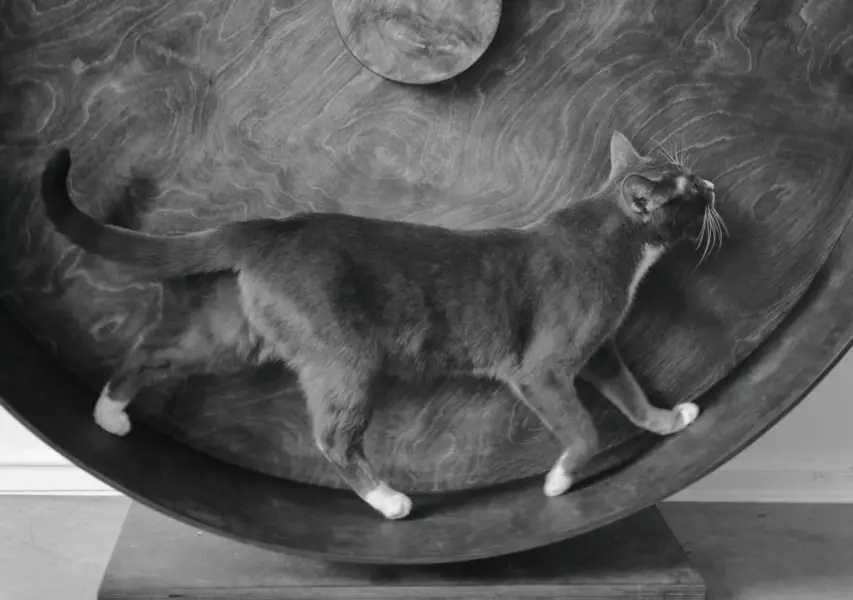Fight Feline Obesity Through Exercise
You love your cat – and that’s the understatement of the century, right? Many of us feline fanatics are quick to display our undying love through a few extra treats here and there, and while there’s nothing wrong with sharing the delight of a midnight snack together, it’s easier than you might think for an extra treat or two to turn into an extra pound or two on your cat’s weight. This might not seem like a huge deal, but if feline weight gain gets out of hand, it can lead to future issues like joint pain, difficulty breathing, feline diabetes, and more. While it’s not quite as easy to get your cat to exercise as it is to exercise a dog, there are ways to help them get active and get their weight under control. Explore five helpful tips with us below!
Encourage Climbing with Cat Trees
Does your kitty have a place in your home where they can flex their climbing muscles? If not, you’d do well to consider purchasing a cat tree, sometimes referred to as a cat tower. Sources like Chewy.com offer a number of cat trees to choose from, varying in their height and number of “floor levels.” Many also come with a scratching post built in, which doubles as a way for your kitty to indulge in their natural instinct and maintain muscle mass while they’re at it.
Offer a Variety of Toys to Play with
From chaser and teaser toys to crinkle and plush toys, this can be one of the most effective ways to help your cat get active. Wand toys allow you to join in on the fun, and if you leave catnip-filled plush toys around the house, it shouldn’t take long for your cat to start chasing them around or even toss them in the air. You can even try starting a (likely one-sided) game of fetch. It’s unlikely your cat will bring the toy back, but if you throw it across the room, they’ll have fun running after it to “hunt it down.”
Explore the Great Outdoors
Allowing your cat to safely roam your yard on a leash and harness can be a fun way to get them active, but you’ll need to exercise certain cautions if you’re going to try this out. Start with purchasing a high-quality, properly fitting leash and harness made for cats. Allow them to get used to the feeling of being leashed in a harness indoors before venturing outside. This may take a couple of weeks, or they might be comfortable right away. Before heading out, it’s smart to assess your surroundings. Is the neighbor mowing their lawn? Is there a barking dog within earshot? Sounds like these may frighten your cat, so you’ll want to head outside only when you’re sure they’ll feel happy and secure. You should also be sure to keep up with flea and tick prevention if you plan to start taking kitty outside. Even if you’re just exploring the front porch, it’s best to err on the side of caution.

Engage Their Skills with Treat Toys
It’s important not to overdo it when it comes to cat treats, but that’s not to say you should never give them. In fact, dental health and hairball prevention treats can be highly beneficial. There are ways to make treat time more engaging, though. You’ll find plenty of puzzle toys on the market, like the PetSafe Funkitty Egg-Cersizer, which encourages your cat to exercise their natural skills as they work to get their treats to dispense from the toy. You can even DIY your own toy by sealing the ends of an empty paper towel roll and poking holes in it that are a bit bigger than kitty’s favorite treats. It’s great exercise for your cat’s physical and emotional wellbeing.
Supervised Catnip Play
Not all cats respond to catnip, but if yours does, you know how wild they can get with it! Encourage your cat to play by rubbing some on their favorite toys, or create your own catnip toy by sprinkling some into a clean sock and tying it off. Looking for a new product to try? Apothecaty Premium Catnip is 100 percent organic, so you can feel great about giving it to your cat. There are even several catnip blends available including valerian root and silver vine which many cats like just as much as catnip; 80 percent of cats respond to these herbs, which increases your chances of getting yours to let loose if they haven’t reacted to traditional catnip in the past. When your cat is begging for treats, reach for the catnip as a no-calorie alternative treat instead!
Helping your kitty shed some weight isn’t easy and takes patience and perseverance, but the future health benefits they’ll see will make the endeavor more than worth the effort. Following just one of the cat exercise tips we discussed today can help you see success, and both you and your cat will have fun along the way. Don’t be shy – share your progress in the comments below, and let us know if you have any additional tips of your own!
